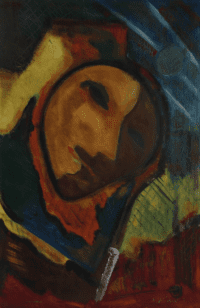Imro Weiner-Kráľ
Imro Weiner-Kráľ, also known as Imrich Weiner-Kráľ (1901-1978), was a Slovakian painter and graphic artist who is considered one of the most original representatives of Slovakian Surrealism and Art Nouveau Expressionism.
Born in Považská Bystrica, Weiner-Kráľ studied architecture and painting at the Czech Technical University and the School of Arts and Crafts in Prague from 1919 to 1922. He continued his education from 1922 at the Academy of Fine Arts in Düsseldorf and from 1923 at the Academy of Fine Arts in Berlin. From 1924, he studied at the École des Beaux-Arts in Paris.
In Paris, Weiner-Kráľ worked briefly in the studios of Colarossi and Grande Chaumière before returning to Slovakia in the same year and settling in Považská Bystrica. Between 1929 and 1932 he lived in Bratislava and later in Berlin. His first surrealist exhibition took place in Bratislava in 1936, together with the painter F. Malý. In 1938, he emigrated to Paris and joined the anti-fascist resistance. He was expelled from Paris in 1950 and lived briefly in Prague and Považská Bystrica before finally settling in Bratislava, where he remained until his death.
Weiner-Kráľ’s works deal with life in the Slovakian countryside and use dream symbols to address his Jewish origins and the social problems of his time. In addition to painting, he also worked as a graphic artist, illustrator and poster designer. His work is characterized by humanistic compositions that combine lyrical, balladic and dramatic elements.
Showing the single result
-
Narr als Traumgeist | Gemälde von Imro Weiner Kral (attr.)
Imro Weiner-Kráľ (1901-1978) zugeschrieben

